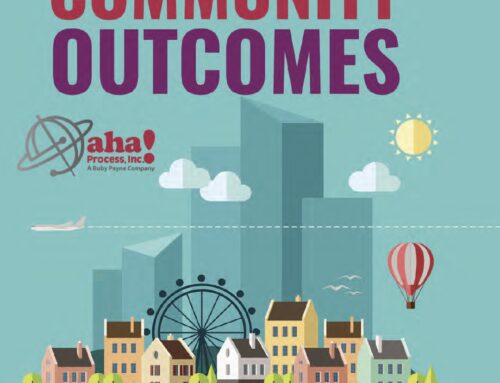 Bridges communities and Getting Ahead sites make big investments of time, money, and effort to provide the Getting Ahead in a Just-Gettin’-By World learning experience to people living in poverty.
Bridges communities and Getting Ahead sites make big investments of time, money, and effort to provide the Getting Ahead in a Just-Gettin’-By World learning experience to people living in poverty.
To understand the value of Getting Ahead, we can go to three sources: the Getting Ahead graduates themselves, the facilitators and sponsors of Getting Ahead, and the vital contribution made possible through CharityTracker reports.
View the latest Getting Ahead report from CharityTracker.
There are 1,534 graduates from 17 states from September 2013 through March 2020 in the CharityTracker system. Only those investigators who opted in to share their data are included in this report. And only those who filled out the assessment initially and at least once as a follow-up were counted. Some filled out one of the three areas (resources, stability, return on investment), some filled out two, and some all three. Regardless of how many of the three they filled out, they were counted as one.
CharityTracker information is based on the Getting Ahead theory. We define poverty as the level of 11 resources found in individuals, institutions, and communities; the higher the level of resources, the better. The goal for the Getting Ahead graduate is to build resources. Instability and living in the tyranny of the moment make it difficult to build resources. The goal is to stabilize the living experience. Finally, we show here that these actions will result in Getting Ahead graduates increasing their income, reducing debt, and building assets. The goal is to document a positive return on investment or ROI.
CharityTracker findings on resource development:
The investigators do a self-assessment of their personal resources. Building resources is a way to measure the journey out of poverty. The baseline data for 796 graduates was entered at the time of graduation. The average number of days between assessments is 170, a little less than half a year. That’s not much time to make improvements in financial, physical, mental (education), social capital, and so on, and yet you will see significant improvements. It stands to reason that some resources, such as knowledge of the hidden rules of class and language, can be improved quickly (20% each), while financial and education resources would develop more slowly (16% and 17% respectively).
CharityTracker findings on stability:
It’s hard to make changes if life is very unstable; put another way, the more stable your life, the easier it is to change directions. The stability scale baseline for 871 graduates was collected by the fourth session. There are 15 indicators of stability. A person has considerable control over some indicators like time horizon. The ability to think of the future while living in chaos is something investigators learn in Getting Ahead. There was a 27% increase in time horizon. Controlling the behavior of children is something that we have less control over, so we see an increase of 15%. Even so, you will see significant improvements across the 15 indicators within the first 170 days.
CharityTracker findings on the return on investment:
How quickly can anyone of any economic class make changes in their ROI? The data on 475 Getting Ahead graduates is encouraging, particularly as it was done in less than half a year: 50% increased monthly income, 49% decreased monthly debt, 53% decreased total debt, 40% increased assets, and 36% decreased use of public benefits.
It’s difficult to repeat studies over time. The information on the average number of days between assessments makes that clear. These are remarkable achievements given the short period of time in which they were done.
For more of the story, we suggest you attend Getting Ahead graduations and read reports from local Getting Ahead providers and funders. Better yet, we hope you will participate in post-Getting Ahead activities that help graduates overcome institutional and community barriers they encounter as they climb out of poverty.
There are aspects of Getting Ahead that are not measured here; that is the matter of Getting Ahead graduates doing the hard work of self- and community analysis, making their own argument for change, taking charge of their lives, and creating their future stories. For that we go to the peer-reviewed, published studies conducted by independent scholars.
Jindra & Jindra: “Connecting Poverty, Culture, and Cognition: The Bridges Out of Poverty Process”
Jindra & Jindra: “Poverty and the Controversial Work of Nonprofits”
There are Getting Ahead graduates who are not included in this study. Getting Ahead was first published in 2004. Since then it has been used in 48 states and eight countries. Over that span of time, many have joined Bridges initiatives as peers with those who once served them. Some have become certified Getting Ahead facilitators, certified Bridges trainers, and national Bridges trainers. They have taken seats at planning and decision-making tables, have been hired by local businesses, and have helped change policies at the city and county levels. Getting Ahead graduates have been called the high-octane fuel in a Bridges initiative.
From them we could learn how long it takes to build higher levels of resources, stability, and financial security. And we could identify barriers they encountered along the way.
The coronavirus pandemic is doubling the problems faced by those in poverty, the working poor, and the working class. Bridges and Getting Ahead communities must ask and then listen to the new cohort about the problems they now face.
We want to honor the Getting Ahead graduates, facilitators, organizations, and communities that have invested in tracking Getting Ahead results. And we want to thank those who participated in collecting and reporting the data that went into CharityTracker; it’s a mountain of work! Finally, we thank CharityTracker for their product, technical support, and partnership.








